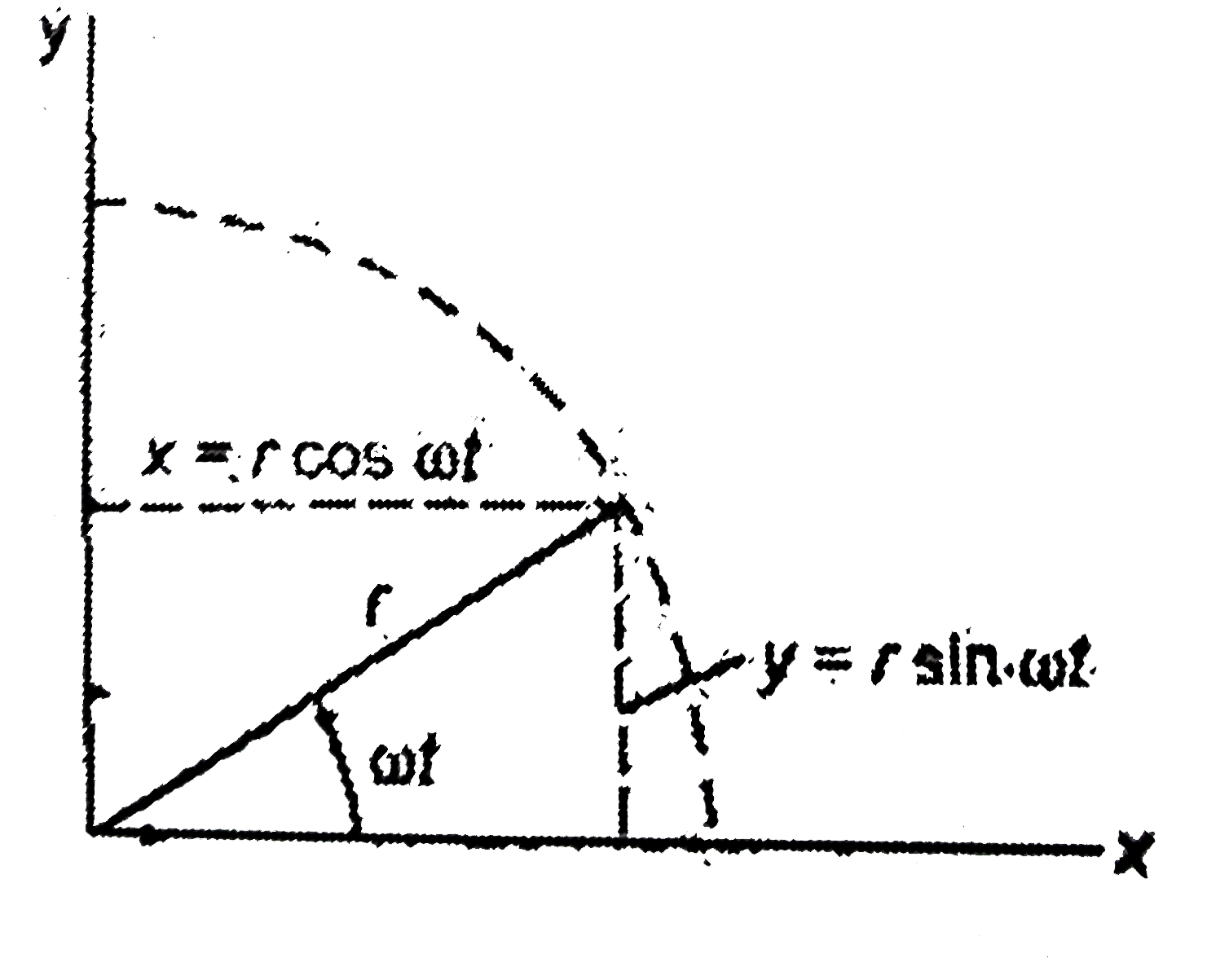Consider a particle moving in the x−y plane according to r=r(cosωtˆi+sinωtˆj), where r and ω are constants. Find the trajectory, the velocity, and the acceleration.

Perpendicular to the velocity
Parallel to the velocity
Directed away from the origin
Perpendicular to the position vector
The correct Answer is:A
Step by step video, text & image solution for Consider a particle moving in the x-y plane according to r=r (cos omegat hat(i)+sin omega t hat(j)), where r and omega are constants. Find the trajectory, the velocity, and the acceleration. by Physics experts to help you in doubts & scoring excellent marks in Class 12 exams.
Updated on:21/07/2023Topper's Solved these Questions
Similar Questions
A point moves in the plane xy according to the law x=asinωt,y=bcosωt, where a,b and ω are positive constants.
Find :
(a) the trajectory equation y(x) of the point and the direction of its motion along this trajectory ,
(b) the acceleration w of the point as a function of its radius vector r relative to the orgin of coordinates.
View SolutionThe position vector of a particle is given by →r=kcosωˆi+ksinωˆj=xˆi+yˆj, where k and ω are constants and t time. Find the angle between the position vector and the velocity vector. Also determine the trajectory of the particle.
View Solution
Knowledge Check
A particle moves in xy plane according to the law x = a sin ωtand y = a(1 – cosωt) where a and ω are constants. The particle traces
Aa parabolaBa straight line equallyinclined to x and y axesCa circleDa distance proportional to timePosition vector of a particle moving in x−y plane at time t is r=a(1−cosωt)ˆi+asinωtˆj. The path of the particle is
Aa circle of radius a and centre and (a,0)Ba circle of radius a and centre at (0,0)Can ellipseDNeither a circle nor an ellipseA particle moves in the xy-plane according to the law x=asin(ωt)andy=a(1−cosωt) where 'a' and 'omega' are constants. Then the particle. follows :
Aa parabolic pathBa straight line path, equally inclined to x- and y-axisCcircular pathDa path such that distance moved by it is proportional to time
A point moves in the plane xy according to the law x=asinωt, y=a(1−cosωt), where a and ω are positive constants. Find:
(a) the distance s traversed by the point during the time τ,
(b) the angle between the point's velocity and acceleration vectors.
View SolutionConsider a particle moving in the x−y plane according to r=r(cosωtˆi+sinωtˆj), where r and ω are constants. Find the trajectory, the velocity, and the acceleration.

View SolutionA particle moves so that its position vector is given by →r=cosωtˆx+sinωtˆy, where ω is a constant which of the following is true ?
View SolutionFor a particle moving in the x-y plane, the x and y coordinates are changing as x=a sin ωt and y=a(1−cosωt), where 'a' and ω constants. Then, what can be inferred for the trajectory of the particle ?
View SolutionA particle moves in x-y plane according to the equation ¯r=(ˆi+2ˆj)Acosωt the motion of the particle is
View Solution
